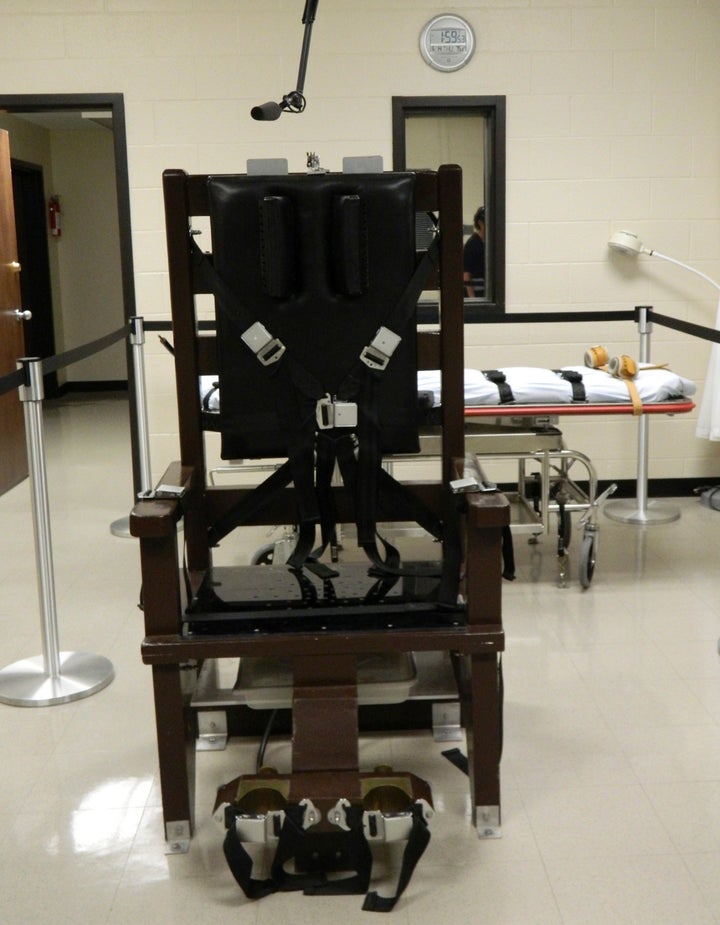If it was up to convicted killer Edmund George Zagorski, he’d die by the electric chair instead of the cocktail of drugs that Tennessee prison officials plan to inject into him on Thursday.
Zagorski, an inmate at Riverbend Maximum Security Institution in Nashville, said he prefers electrocution because he does “not want to be subjected to the torture of the current lethal injection method,” according to an affidavit he sent to prison officials on Monday.
In Tennessee, death row inmates convicted prior to January 1999 are given a choice between lethal injection and the electric chair. If the inmate doesn’t make a decision, the default is lethal injection.
Still, prison officials refused Zagorski’s request this week, saying he’d waited too long to decide, according to the Tennessean.
In a statement to USA Today, the Tennessee Department of Corrections said death row inmates must request the chair a full two weeks before the date of their execution. (The department declined to offer additional comment to HuffPost.)
Zagorski’s attorney, federal public defender Kelley Henry, told The Associated Press that Zagorski made his request for the electric chair roughly two hours before the Tennessee Supreme Court ruled the state’s three-drug lethal injection protocol is constitutional. That decision paved the way for Zagorski’s execution on Thursday, AP reported.
“Mr. Zagorski has indicated that if his execution is to move forward, he believes that the electric chair is the lesser of two evils,” Henry said in a statement obtained by AP.

Zagorski, 63, has been on death row for 34 years.
According to court records, he was 28 years old in April 1983 when he lured two men into a wooded area in Robertson County, Tennessee, under the pretense of a drug deal. Zagorski shot both men, slit their throats and took thousands of dollars in cash, authorities said.
Before he was captured, Zagorski, armed and wearing a bulletproof vest, got into a shootout with law enforcement officers in Ohio. During the May 1983 incident, he rammed a police car and shot one officer five times. The officer miraculously survived.
When the Tennessee case went to trial in 1984, Zagorski was convicted of first-degree premeditated murder. According to court documents, the jury recommended the death penalty based on two aggravating circumstances: The murders were “heinous, atrocious, or cruel” and they were committed during the commission of a robbery.
Tennessee is one of only nine states that still allow electrocutions, but the method has not been used there since 2007 when Daryl Holton was executed for a quadruple homicide.
Rev. Joe Ingle, a United Church of Christ minister and Zagorski’s spiritual adviser, told the Tennessean that Zagorski chose the electric chair, in part, due to the reports about Billy Ray Irick’s suffering during his lethal injection on Aug. 9.
“I think the guys felt like Billy Irick suffered a long time and no one wants to go through that,” Ingle said. “As bad as the electric chair is and it’s pretty bad, it’s not that.”

Death by intravenous drugs can be an excruciatingly long affair, depending on the state doing the injection and the specific drugs used.
On Jan. 16, 2017, Ohio executed convicted rapist and murderer Dennis McGuire by lethal injection and it took him 25 minutes to die – roughly double the average time for similar executions.
In April 2014, Oklahoma inmate Clayton Lockett was pronounced dead 45 minutes after his execution began. Due to complications with the procedure, Lockett writhed on the gurney and the area around his injection site swelled up to the size of a golf ball.
It took Ohio prisoner Joseph Lewis Clark, who was executed by lethal injection in 2006, 86 minutes to die.
Zagorski is among 31 death row inmates who sued to block Tennessee from using a controversial cocktail of drugs in executions. Experts reportedly testified that the drugs would cause pain so severe that it would amount to cruel and unusual punishment, which violates the U.S. Constitution.
The state’s high court ruled against them, saying they’d failed to suggest a feasible alternative drug cocktail.

As for Zagorski’s execution, Tennessee Gov. Bill Haslam, a Republican, said he will not be granting clemency, Nashville’s WTVF News reported.
Henry is now hoping the U.S. Supreme Court will grant a last-minute stay of execution.
“The state’s three-drug protocol is certain torture,” she wrote in a public statement, according to the Tennessean. “Mr. Zagorski’s lungs would fill with fluid as the lining is burned away by acid. He would be paralyzed, then burned alive chemically from within. With no pain relief, Mr. Zagorski would have to endure this extreme suffering for 10-18 minutes.”

